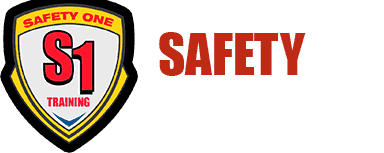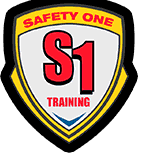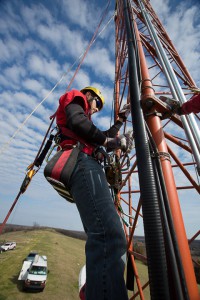21 May TESTING OF FALL PROTECTION EQUIPMENT
Testing of Fall Protection Equipment
Fall protection. Testing to validate manufacturers claims. Where we are now, where are we going and some shocking things that you may not know.
Modern fall protection equipment that is sold in stores is typically tagged with a specification of the product ratings and limitations, and/or a standard that it is built and tested to. In the tower industry, the most common standard that manufacturers in the US will build equipment to is ANSI. In Canada it is CSA, in Europe it is EN and as you travel the world there are others. We will often tell students that if the equipment has our desired ANSI rating that it is likely suitable for what we are doing.
In our program at Safety One Training International Inc., we test all of the equipment that we use in training prior to using it in a class. Why? Because manufacturers are able to tag equipment with a rating and we as consumers are expected to assume that it is correct. ANSI actually dictates numerous conditions that equipment is required to be tested to, examples include: cold and hot temperatures, tensile strength, continuous abrasion, repetition stress, varying worker weights and more. The hazard here is that if a manufacturer tags a piece of equipment with a rating and they are actually incorrect in their claims, this may be dangerous! We have found several times in the past through our extensive in house testing procedures that equipment does not always test to the rating in which it is tagged to. This is why we stress to purchase equipment from a credible source, not just the lowest bidder on contracts. OSHA even writes procedures for companies to perform their own in house tests to verify that their equipment is sufficient under specific conditions.
Our Goal
Our goal as a training organization is to educate workers at height of the dangers in improper use of equipment. Minor errors in rigging can cause catastrophic failures in equipment thus emphasizing the importance of proper education.
The Future
The future of our testing program looks to be very exciting. We currently test equipment to the standards that they are rated with, but we also take it a level further than that. In all of our training experience both nationally and abroad, we have seen crews in many extreme environments where equipment may be have been used outside of its normal intent, and workers ask: “was that safe”? We strive to perform these tests through some of our advanced testing equipment at our Colorado facility, including tensile and dynamic test equipment and our industry first “Enviro-chamber” where students can practice at height skills in an controlled environment down to -20 degrees F.
Todd Horning



No Comments